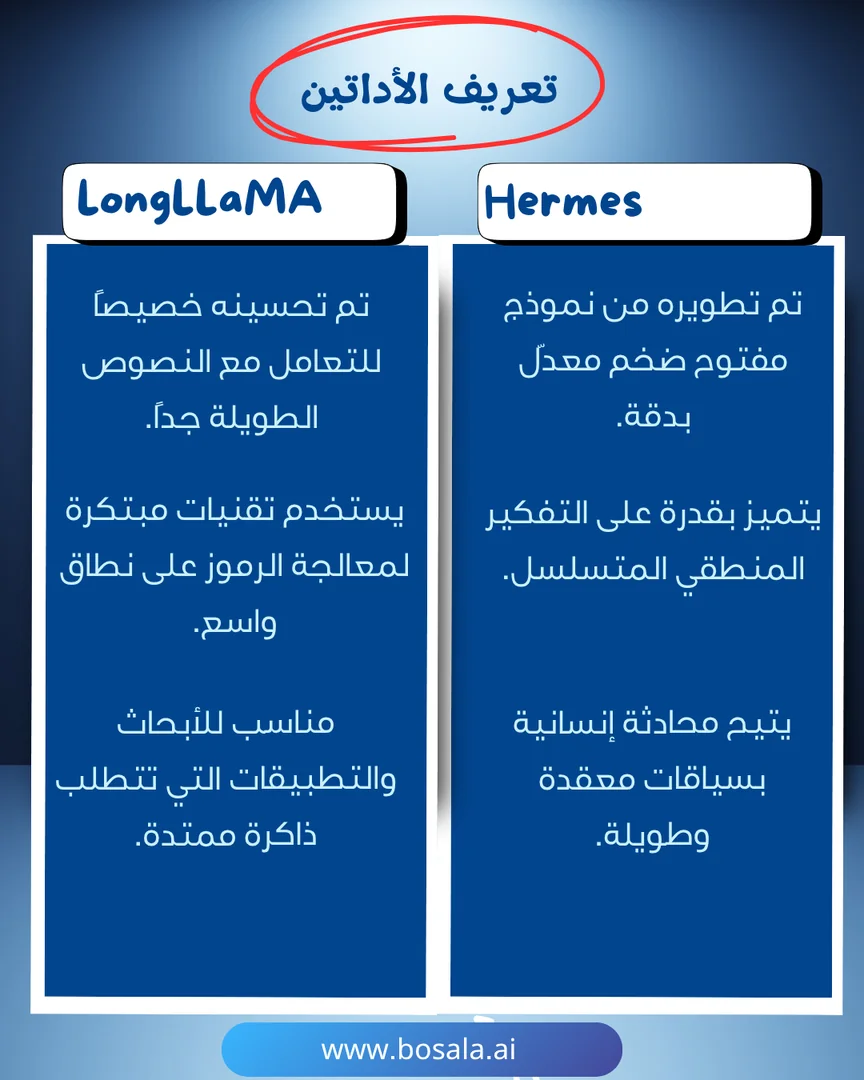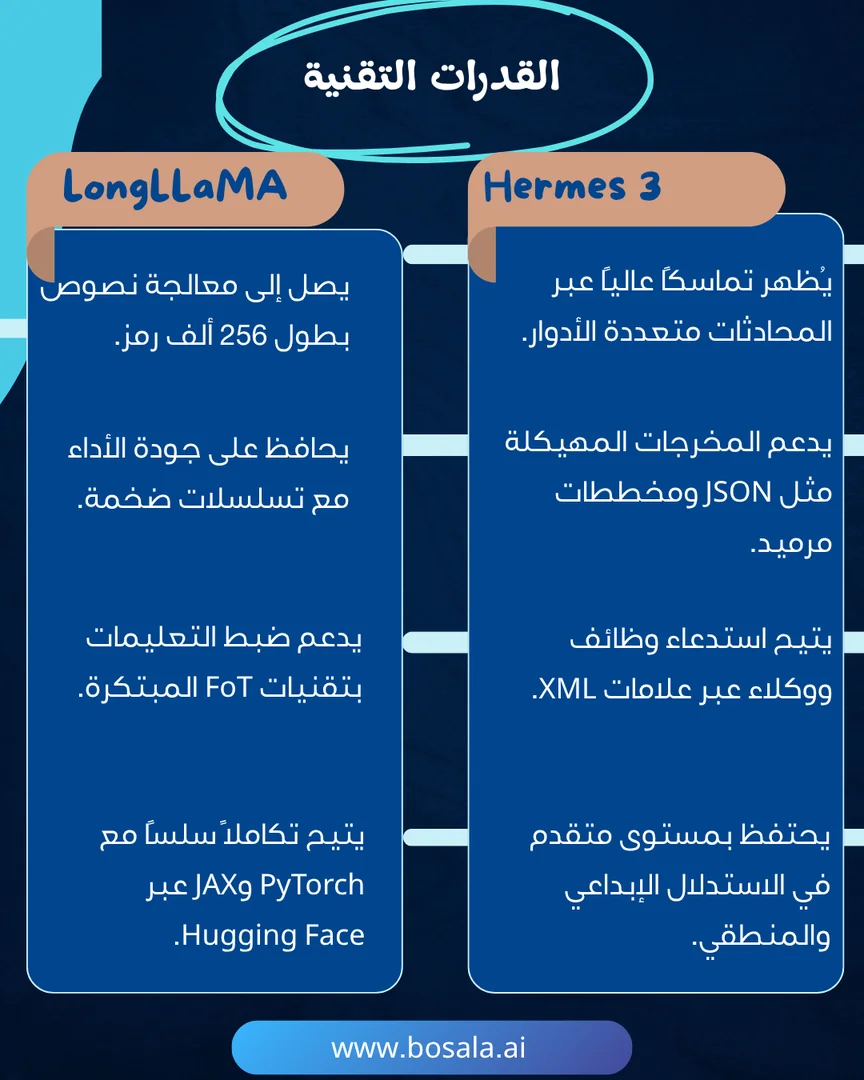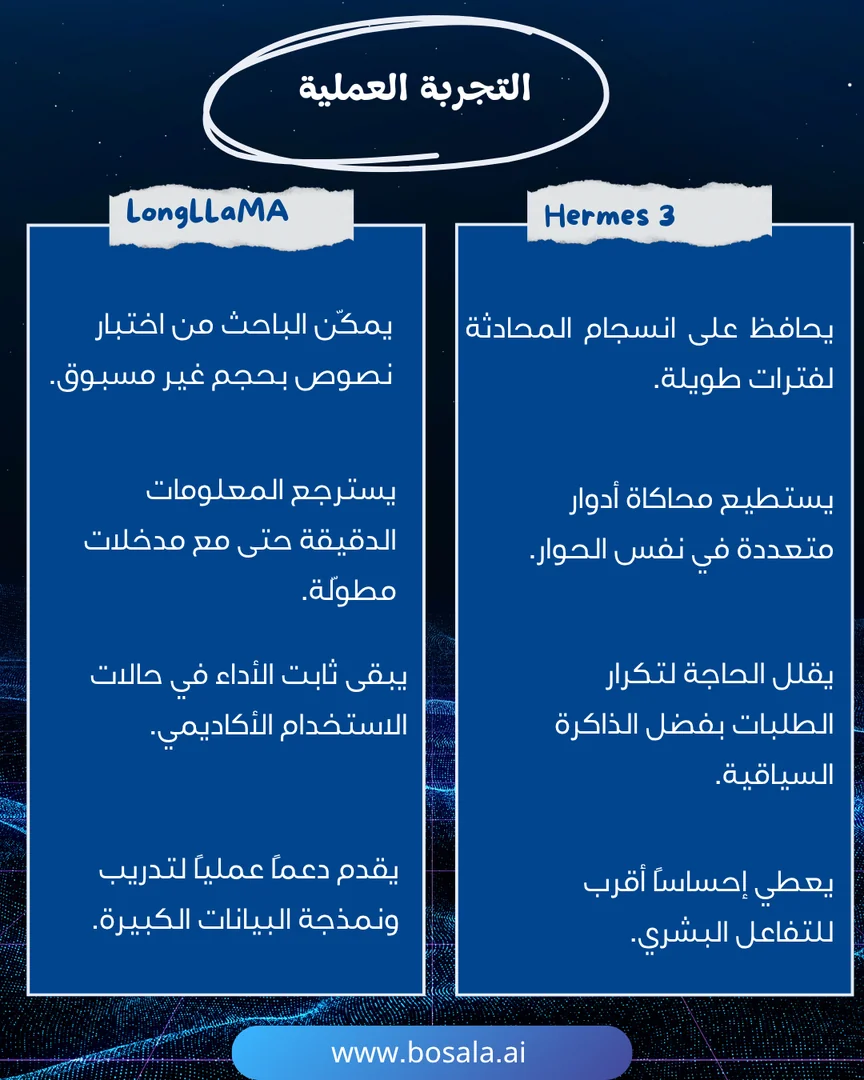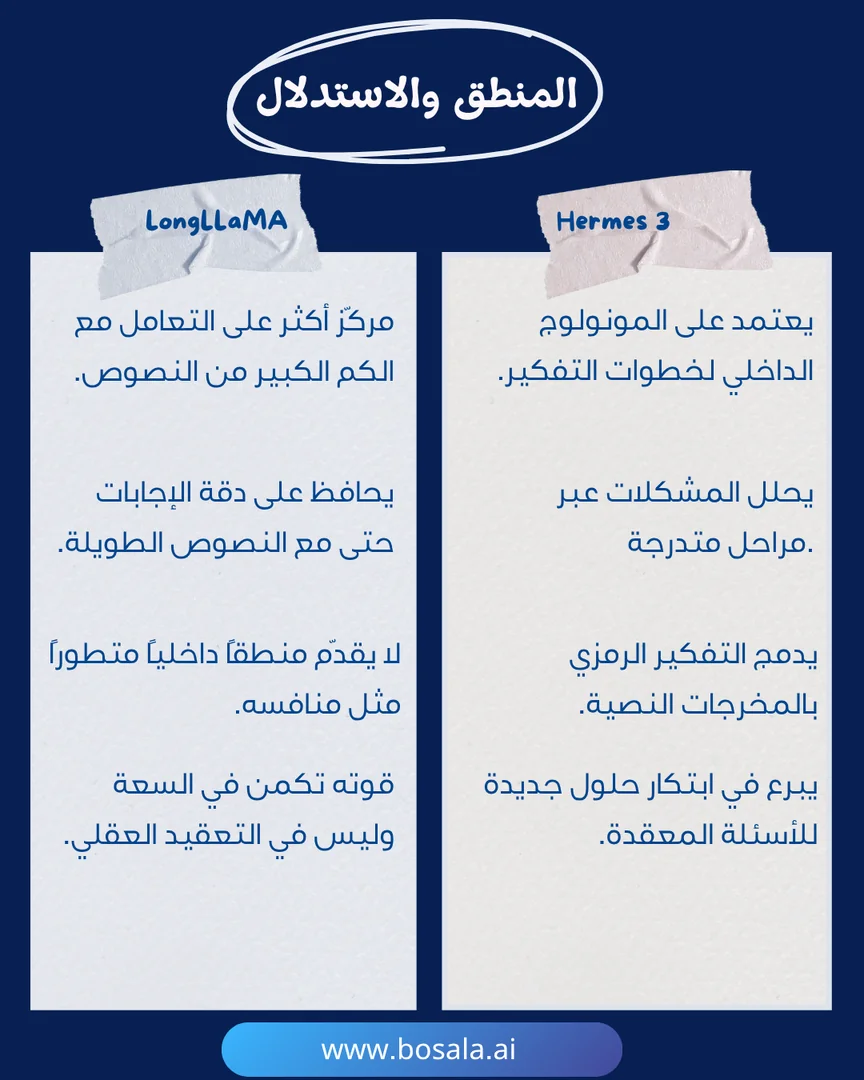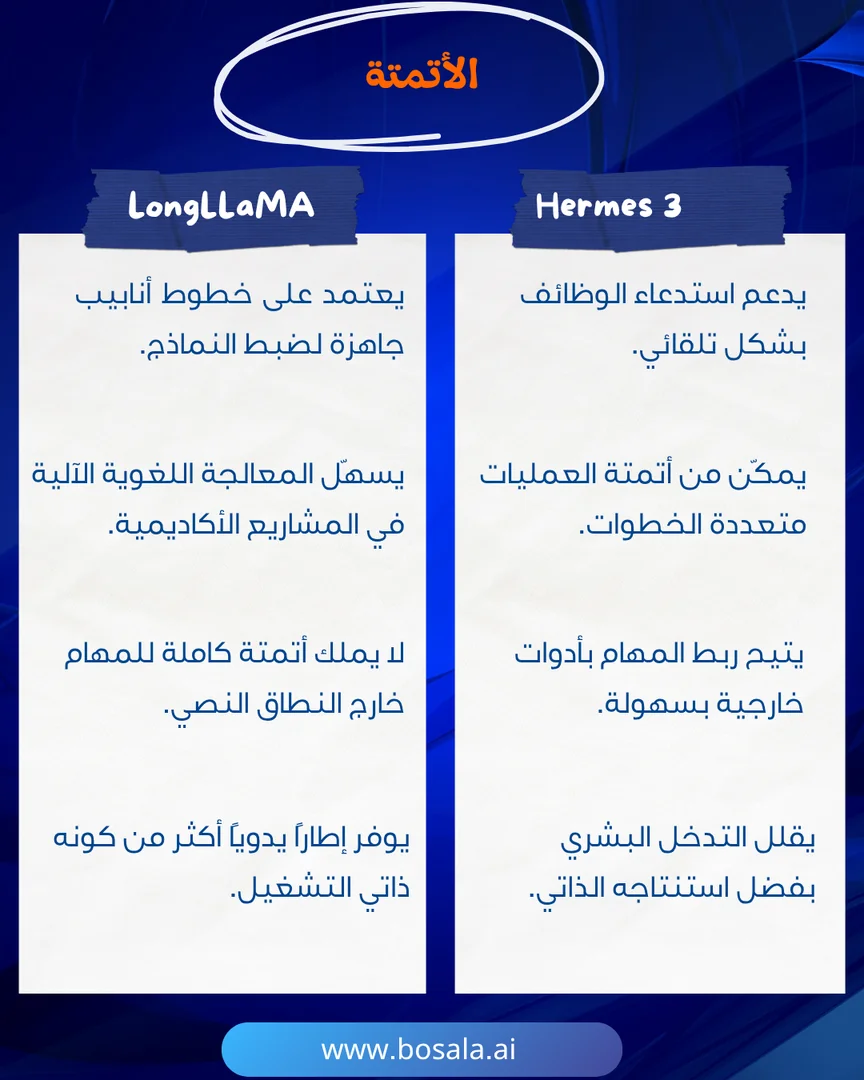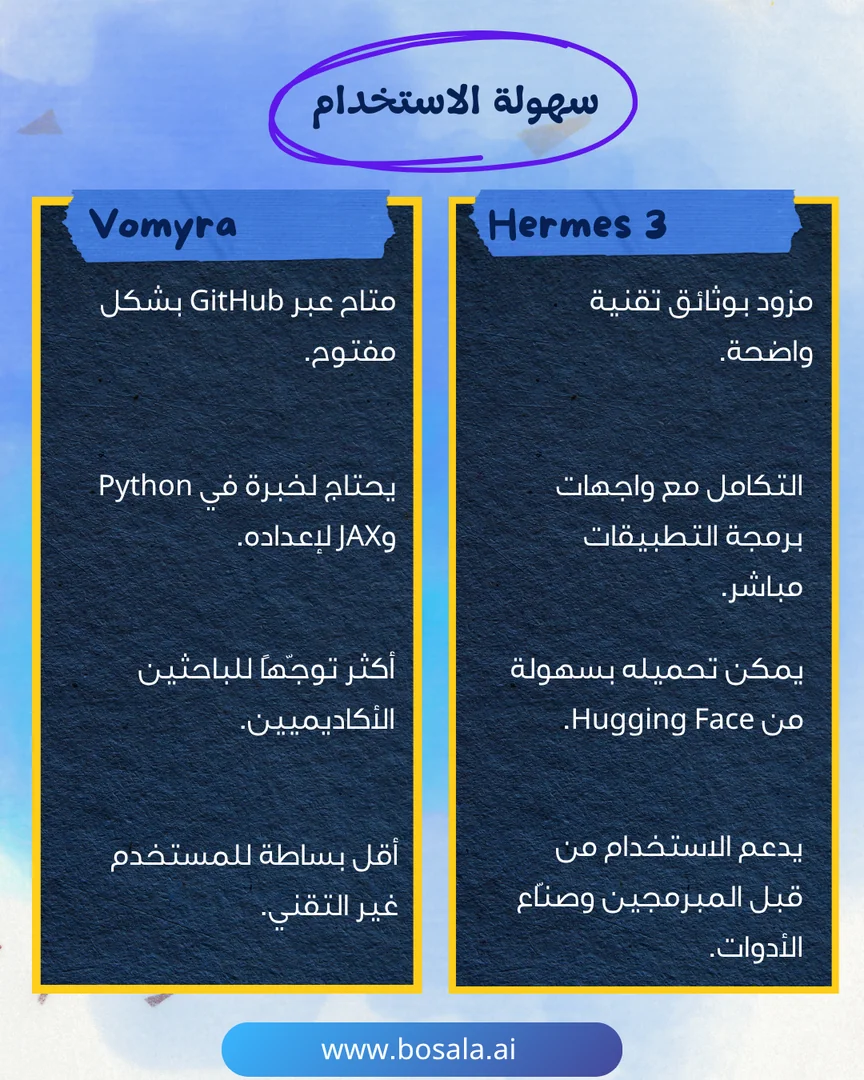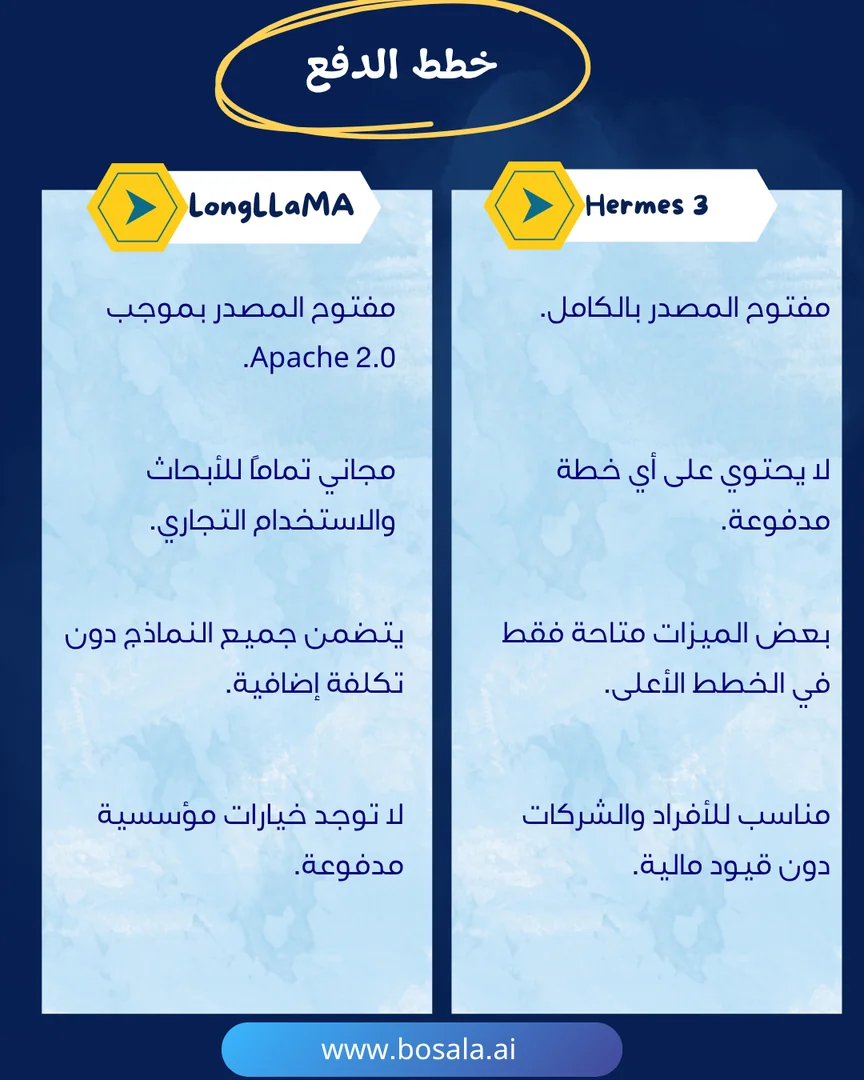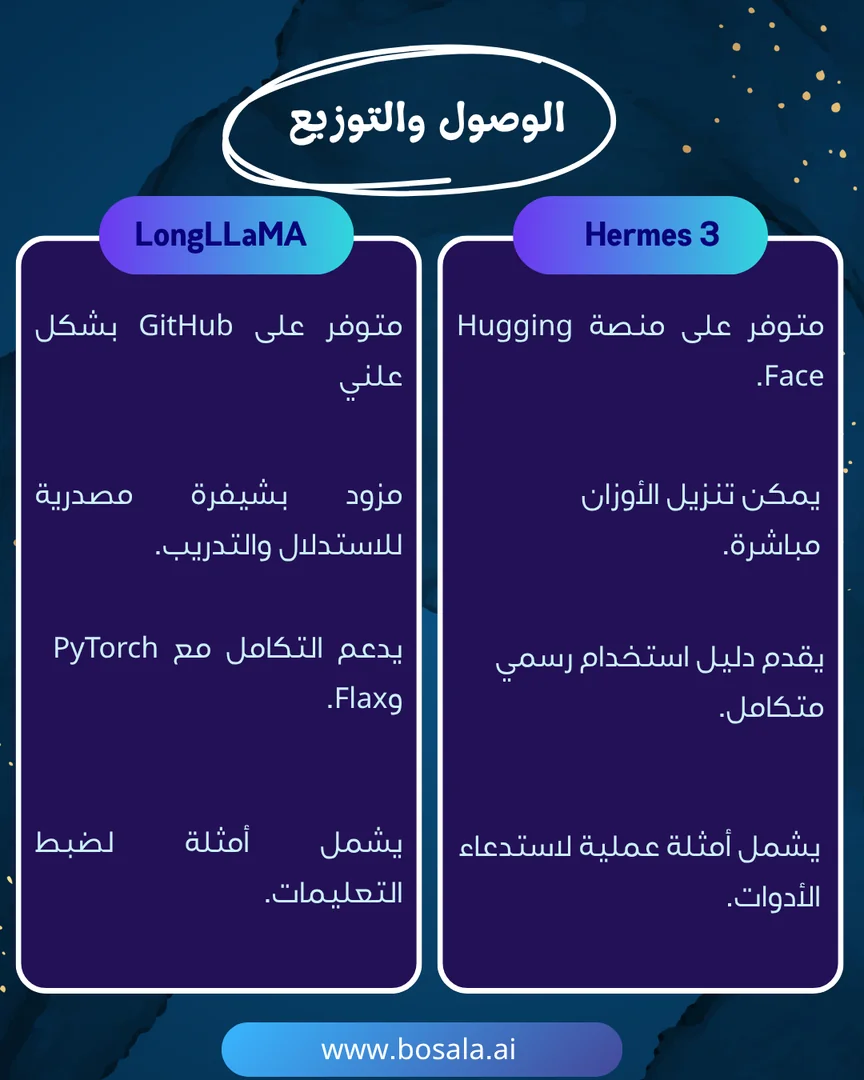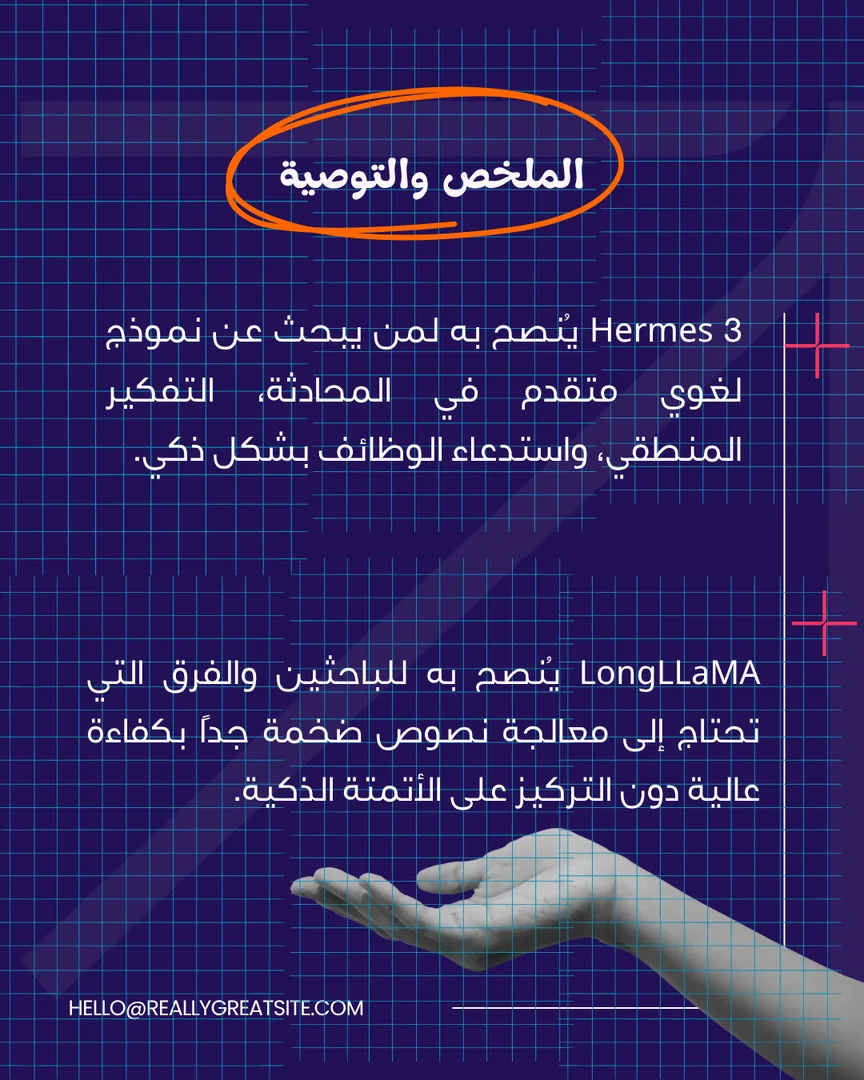In the world of open-source language models, Hermes 3 and LongLLaMA are competing to deliver a more human-like AI experience. The former focuses on logical reasoning and intelligent function invocation, while the latter emphasizes its strength in processing long texts and retaining context over thousands of tokens. Both offer a different look at the future of open models.
Check out the slides below to find out which one is right for you.
About LongLLaMA
🖼️ Tool Name:
LongLLaMA
🔖 Tool Category:
Programming & Development — specifically, a large language model optimized for handling extremely long text contexts.
✏️ What does this tool offer?
LongLLaMA is a variant of the OpenLLaMA model, refined using the Focused Transformer (FoT) method. This enables it to effectively manage input sequences up to 256,000 tokens, a significant leap over standard models It supports a 3B-parameter base variant under the Apache 2.0 license, with inference code compatible with Hugging Face for seamless integration.
⭐ What does the tool actually deliver based on user experience?
• Capable of processing and generating text across extremely long contexts up to 256k tokens.
• Maintains high performance in tasks like passkey retrieval even on very long inputs.
• Comes with pre-training, instruction-tuning code (with FoT continuing training), and inference examples utilizing PyTorch, JAX/Flax frameworks.
🤖 Does it include automation?
Partially. While LongLLaMA itself is a model rather than a workflow tool, it facilitates automated natural language processing by supporting extended context inference and includes pre-built fine-tuning pipelines.
💰 Pricing Model:
Fully open-source under Apache 2.0 license — no commercial or paid model available.
🆓 Free Plan Details:
• Entirely free for research and commercial use.
• Includes base model weights, FoT pretraining, and instruction-tuning code without restrictions .
💳 Paid Plan Details:
None — no enterprise or premium options exist.
🧭 Access Method:
• Download the model and code from the GitHub repository: CStanKonrad/long_llama .
• Run inference and fine-tuning workflows via Hugging Face APIs or custom scripts in PyTorch/JAX .
🔗 Experience Link:
About Hermes 3
🖼️ Tool Name:
Hermes 3
🔖 Tool Category:
Programming & Development — specifically, a high-end open-source LLM framework with advanced reasoning, long-term context, and agentic capabilities.
✏️ What does this tool offer?
Hermes 3 is a generalist instruct-tuned large language model (LLM), fine-tuned from Meta’s Llama 3.1 (8B, 70B, 405B sizes). Developed by Nous Research, it features enhanced long-context retention, multi-turn conversation, complex role-playing, internal monologue, and agentic function-calling abilities—such as XML tool invocation, scratchpads, internal reasoning, and structured outputs like JSON or Mermaid diagrams
⭐ What does the tool actually deliver based on user experience?
Frontline-level performance among open-weight models on reasoning and creative tasks.
Supports advanced agentic features: tool calling via XML tags, internal deliberation with <INNER_MONOLOGUE>, step-wise planning, and structured outputs like JSON
Maintains coherent responses over extended interaction spans, enabling deeper alignments and human-like conversational capabilities.
🤖 Does it include automation?
Yes — Hermes 3 supports highly automated workflows:
Enables autonomous multi-step reasoning and task-solving using internal monologues and function/tool calling
Contextual recall over long interactions reduces the need for repeated prompts.
💰 Pricing Model:
Fully open-source — Free
🆓 Free Plan Details:
Available under open licensing via Hugging Face and NousResearch’s GitHub.
Includes all model sizes and tooling examples.
💳 Paid Plan Details:
None — the model is openly available with no pricing tiers.
🧭 Access Method:
Download available on HuggingFace (NousResearch’s Hermes‑3‑Llama‑3.1 models).
Function calling and usage guides via official documentation, APIs, and technical reports.
🔗 Experience Link:
https://nousresearch.com/hermes3

